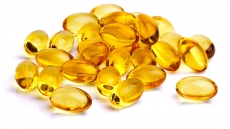OTTAWA — As the Liberal government began moving on its commitment to legalize marijuana, Health Canada flagged nine key considerations — from health risks and benefits to the experience of other jurisdictions, newly obtained documents show.
A November 2015 ministerial briefing presentation, "Legalizing & Regulating Marijuana," was released to The Canadian Press under the Access to Information Act. Some conclusions and recommendations were withheld from release, but the document offers insight into how the new government will navigate the issue. A look at the nine areas cited by Health Canada:
Canadian marijuana usage rates — 11 per cent of the population age 15 and older used marijuana in the past year, according to a 2013 survey. Use was highest among 20-24 year-olds at 26 per cent. The presentation characterizes this as "relatively low overall rates of usage" and points to evidence that use declines with age.

Evidence of health benefits and risks — There is some evidence of limited therapeutic benefit to marijuana use for managing symptoms of chemotherapy, neuropathic pain and treatment-resistant epilepsy in children. But the health-community consensus is that regular recreational usage carries risks, including long-term cognitive ones for those under 25.
International legal framework — Canada is party to a global legal framework on psychotropic drugs, including the 1961 Single Convention on Narcotic Drugs. It does not allow for legalization but allows leeway on the kinds of sanctions imposed. The International Narcotics Control Board expressed regret over Uruguay's decision to legalize marijuana, but it is not clear what practical impact this has had, Health Canada notes. A UN special session on the World Drug Problem is slated for next month.
Canadian regime for medical marijuana — The 2013 Marijuana for Medical Purposes Regulations attempted to shift the medical marijuana industry to licensed producers, away from home growers. But thousands of Canadians were allowed to possess or grow marijuana pending a court ruling that came down last month.

Domestic legal context — The court ruling handed down in February affirmed the right of people to grow their own medical marijuana. The presentation, drafted before the ruling, says the decision and others from the courts could affect government choices on the new legal regime.
Role of provincial and territorial governments — The federal and provincial / territorial governments would be able to regulate in many of the same areas concerning access to legal marijuana. The federal government could set minimum standards, but provinces and territories might enact more stringent requirements on where pot is consumed, retail sale locations or minimum age for purchase. Achieving a national approach will require close co-operation.
Experience of other jurisdictions — While Uruguay adopted tight government control, Colorado and Washington states chose models that spurred involvement of commercial interests, increasing risks to health and safety. Early lessons from the U.S. reinforce the need to take time to implement a legalized model, figuring out the complexities of how best to protect public health.

Law enforcement issues — Organized crime groups are heavily involved in the marijuana trade. Illicit grow operations exist in all parts of Canada. Police-reported drug-impaired driving incidents are a small fraction of actual drug-impaired driving incidents, as it is difficult to recognize the signs. Given all this, a national approach will require police agencies to work together.
Youth justice — The Youth Criminal Justice Act requires police to consider use of measures such as warnings and referrals to community programs for those ages 12 through 17. Careful consideration will need to be given to how the new regime will be enforced when it comes to young people.





